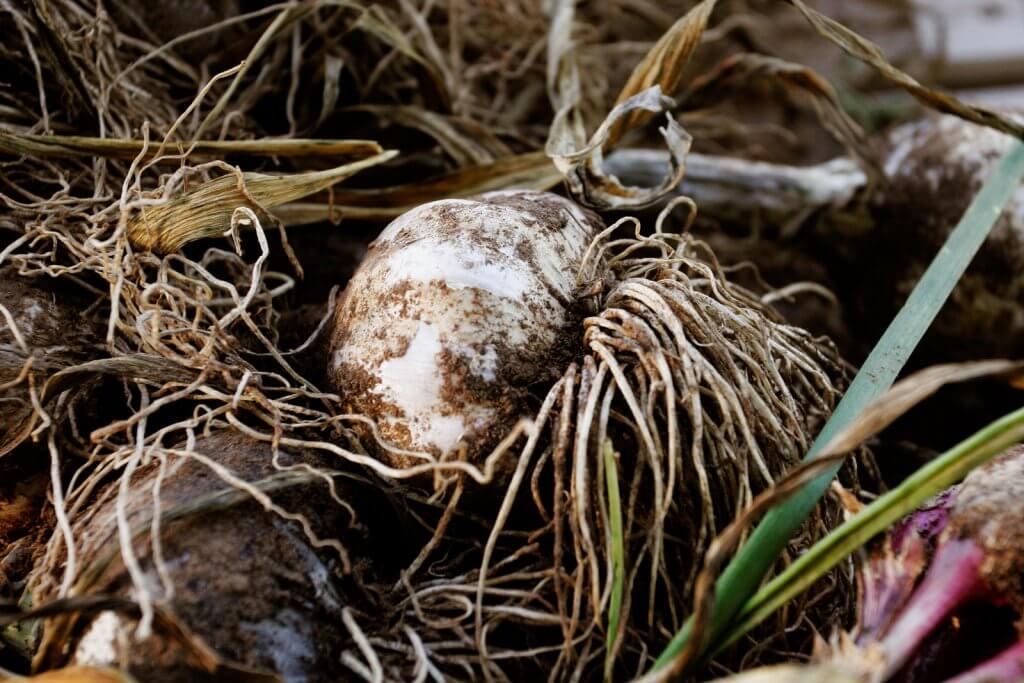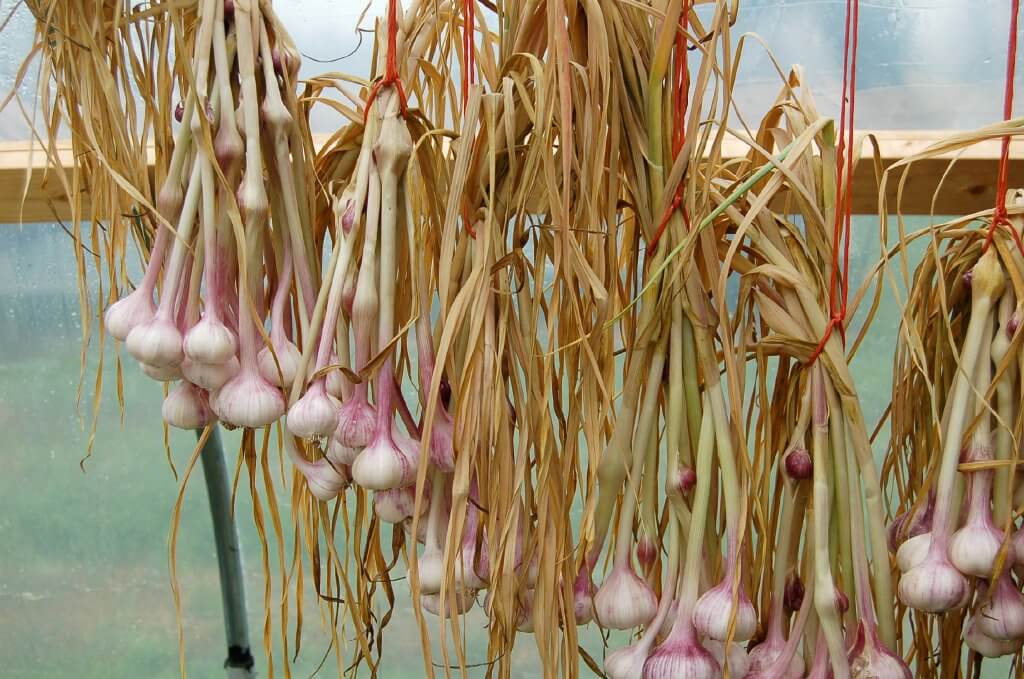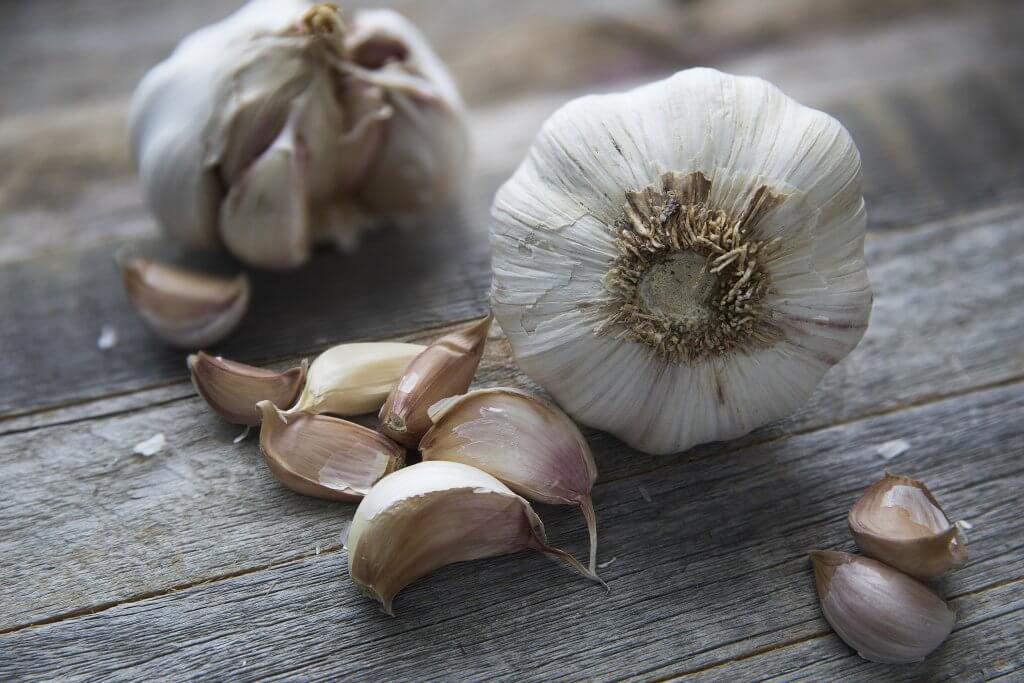Garlic (Allium sativum) is perhaps one of the most widely used herbs on the planet. It is part of the onion family, with close relatives being shallots, leeks and chives. Garlic is native to parts of central Asia and has spread throughout the centuries to almost every part of the globe. You will find it growing in many herb gardens, and cultivated in many countries. However in the wild you are likely to find varieties growing in woodlands and fields throughout Europe and and North America.
The plant itself consists of a bulbous base and a stem of thick leaves that typically reaches 1 meter. When flowering you well see a delicate array of light purple flower heads at the end of long stems.

Cultivation and History of Garlic
It has a long culinary and also medicinal history in many cultures. From the ancient Egyptians to the ancient Romans. Its distinctive flavor and effectiveness as a herbal remedy have made it extremely popular. Today, the largest commercial cultivators of garlic are China and India. Although China dominates the market with an incredible 80% of production.
Growing garlic is easy and fulfilling. Its an excellent herb to have on hand within the garden. There are two types of garlic called hard neck and soft neck. The hard neck variety will cope better with colder weather, so this may be optimal if you live in a colder climate.
Plant garlic cloves in a sunny location with very well draining soil. Fall is the best time for planting as the cold of winter is needed to begin bulb production. Dig a low trench, and place the cloves pointy end up and 15cm apart. Cover with a light dusting of soil. Water the seedlings during dry spells and remove weeds as they appear.
Garlic is ready to harvest when the leaves begin to yellow and die off. The newly formed bulbs can be eased from the ground using a trowel or fork. Allow the plant to dry, then cut and remove the leaves, and store the bulbs in a cool dry space.

Toxicity
Garlic is not toxic to humans, however it can prove toxic and potential fatal to some pets. Garlic can cause halitosis, or bad breath, depending on how much is consumed. The chemicals found within garlic are very pungent, as they can also cause a strong smell within sweat.
Uses
Culinary uses of garlic
You can use garlic to flavor a huge array of dishes. From sauces, soups and dressings, to marinades, curries and meats. It is a particularly popular ingredient in Chinese dishes, including stir fry, soups and curries. Tomato based dishes pair exceptionally well with garlic, particularly in Mediterranean and Italian cooking. Within middle eastern cooking, a mixture of garlic, salt and oil is often created to form a sauce.
Toasts and breads are often coated with a garlic butter or herb mixture. For example naan breads from India and brushchetta from Italy.

Medicinal uses of garlic
Garlic has proven its effectiveness in a number of medicinal studies. It can help to soften arteries which can harden in older individuals. It can also reduce blood sugar levels and cholesterol. Eating at least one clove of garlic a day has also been suggested to lower the risk of men developing prostate cancer. Chemicals found within garlic are also used within anti fungal medications that treat conditions like athletes foot. Many individuals also claim that garlic helps in relieving the symptoms of the common cold.
Did you know…
Many folkloric stories and tales contain the use of garlic to ward of evil spirits and demons. Central European folklore, particularly from Romani communities, believed garlic could ward off werewolves and vampires. It is hung within homes and placed on the graves of loved ones, to keep them safe from evil spirits.
Conclusion
Incredibly easy to grow, garlic is a must have plant for your garden. Its impactful flavoring is hard to replace, and its versatility in the kitchen makes it a very valuable herb. The delicate purple flowers and long stems also add ornamental value to your garden.
—————Written by Hannah Sweet
Hannah is a freelance writer and graphic designer from the UK. With a penchant for travelling, photography and all things botanical, she enjoys writing about a wealth of topics and issues, from conservation and slow living, to design and travel. Learn more about her writing and design services at www.sweetmeanders.co
Many of our readers find that subscribing to Eat The Planet is the best way to make sure they don't miss any of our valuable information about wild edibles.
See our privacy policy for more information about ads on this site






